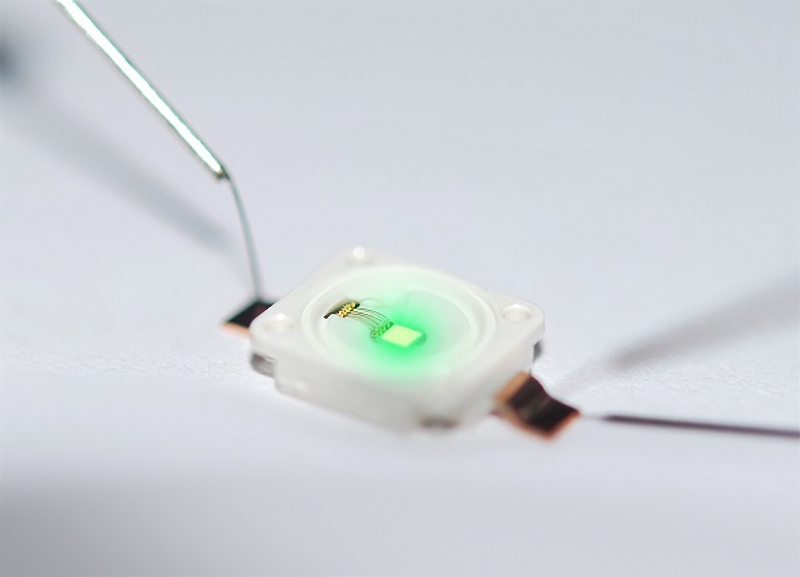NEWS
NEWS
Osram makes it to increase the lighting efficiency of green LEDs by 40%
11-05-2018
The sharp drop in lighting output (green gap phenomenon) shown by green LEDs has often made efficiency problems and high costs in customer applications. For its indium gallium nitride (InGaN)-based green LEDs, Osram Opto Semiconductors has now succeeded in reducing the standard front voltages by around 600 mV greatly. With a simultaneous increase in optical output power, customers instantly benefit from improvements in efficiency of up to 40 percent compared to previous products across the entire UX:3 portfolio from Osram.

Osram Opto Semiconductors has achieved in reducing the standard front voltages of green LEDs.
Developers at Osram Opto Semiconductors have tried to reduce the typical front voltages of green direct emitting InGaN LEDs by 600 mV to 2.6 V at power densities of 45 A/cm2. The benefits are big enough, particularly for applications in which red, blue and green LEDs are used in combination. Because all three colors now have a voltage of less than 3V the drivers, which were designed for higher maximum voltages before, can now be produced smaller. This in turn reduces both dissipative power loss and costs. The important factors in increasing efficiency were improved charge carrier transport and optimized material quality in the epitaxial layers.
At 350 mA, 1 mm2 UX:3 chips achieve efficiencies of 175 lm/W and higher at wavelengths around 530 nm with the new technology. Absolute light output in excess of 300 lm at a pumping current of 1 A starts new applications for customers.
Nowadays, these efficiency values seemed impossible for green direct emitting InGaN LEDs. Osram are now moving into areas that up to now have been achievable only with phosphor conversion emitters but with significantly reduced spectral quality. The team is currently working on further improvements that offer potential which has become evident as a result of the recent findings.

Osram Opto Semiconductors has achieved in reducing the standard front voltages of green LEDs.
Developers at Osram Opto Semiconductors have tried to reduce the typical front voltages of green direct emitting InGaN LEDs by 600 mV to 2.6 V at power densities of 45 A/cm2. The benefits are big enough, particularly for applications in which red, blue and green LEDs are used in combination. Because all three colors now have a voltage of less than 3V the drivers, which were designed for higher maximum voltages before, can now be produced smaller. This in turn reduces both dissipative power loss and costs. The important factors in increasing efficiency were improved charge carrier transport and optimized material quality in the epitaxial layers.
At 350 mA, 1 mm2 UX:3 chips achieve efficiencies of 175 lm/W and higher at wavelengths around 530 nm with the new technology. Absolute light output in excess of 300 lm at a pumping current of 1 A starts new applications for customers.
Nowadays, these efficiency values seemed impossible for green direct emitting InGaN LEDs. Osram are now moving into areas that up to now have been achievable only with phosphor conversion emitters but with significantly reduced spectral quality. The team is currently working on further improvements that offer potential which has become evident as a result of the recent findings.


